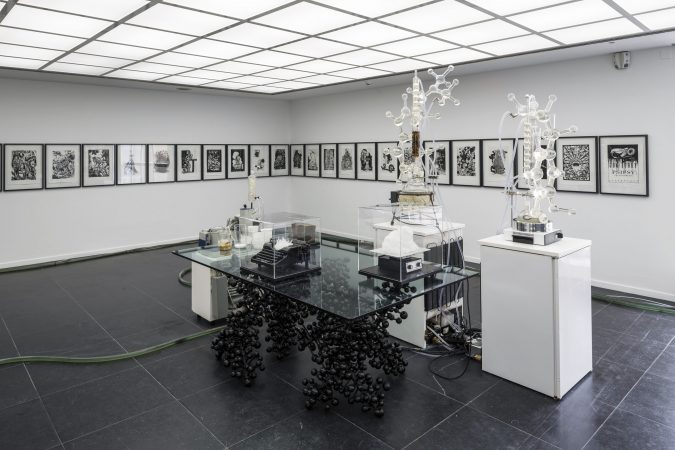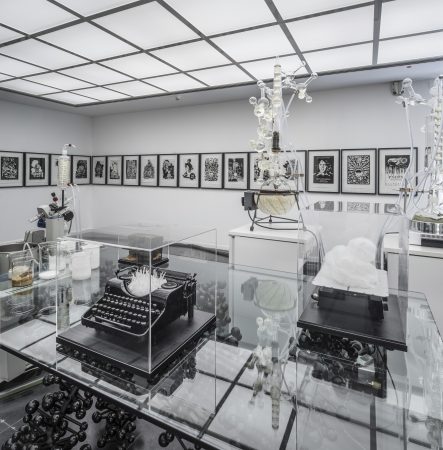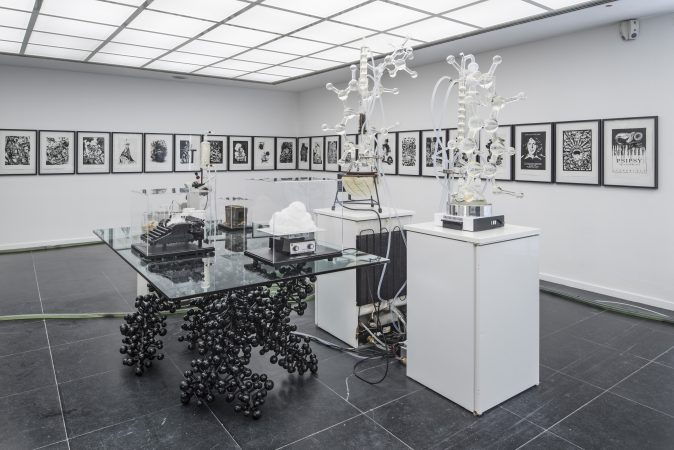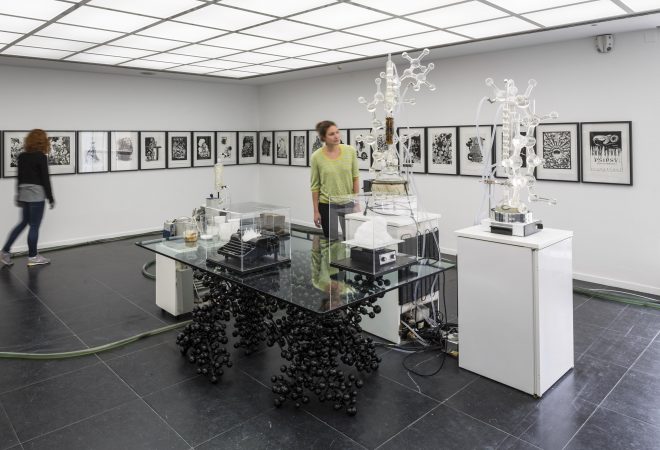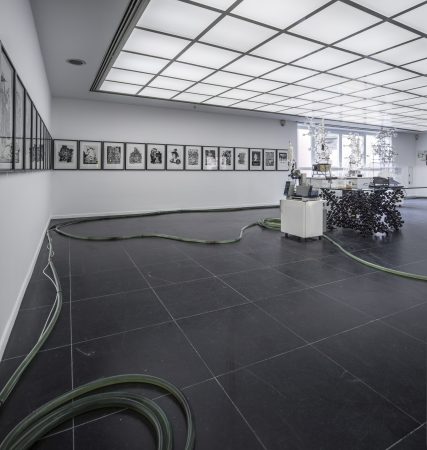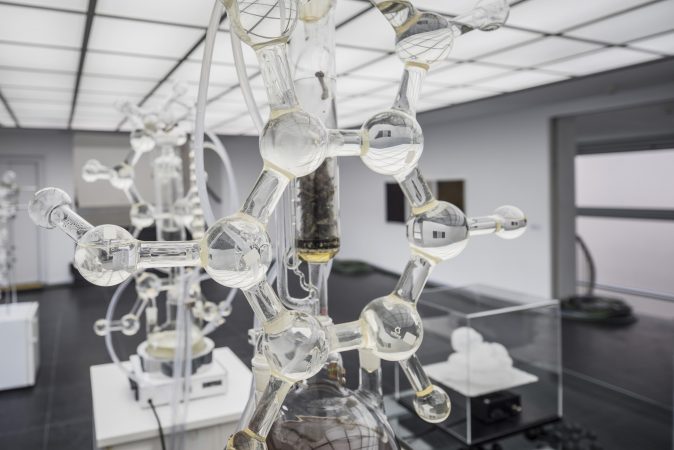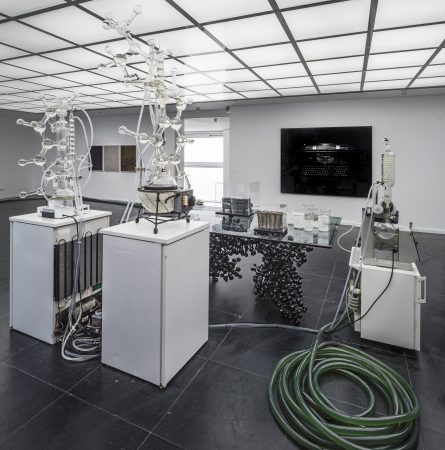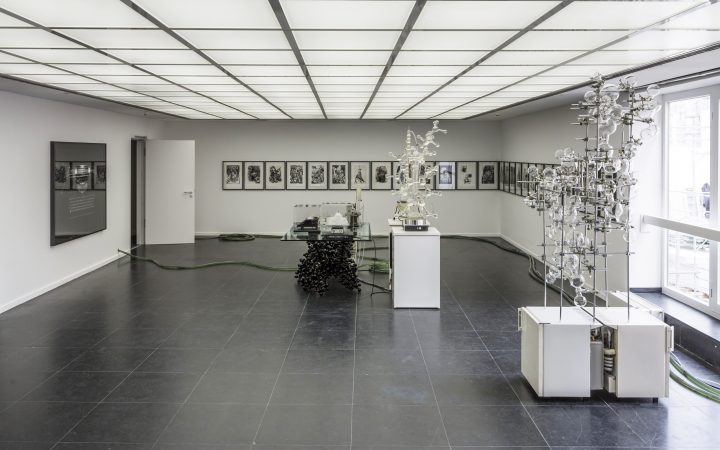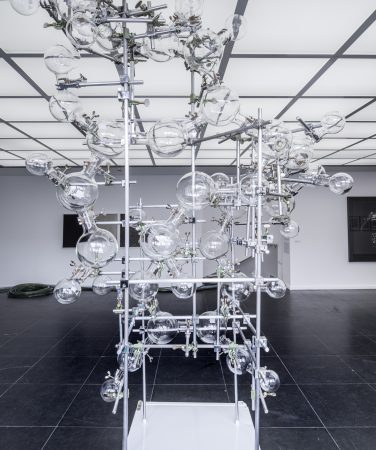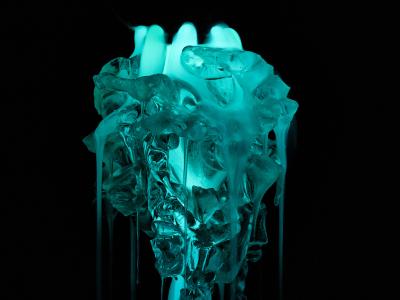Laboratory Kitchen
Thomas Feuerstein uses the single-cell chlorella harvested from the MANNA-MACHINE III as painting pigment. In the monochromatic images from the HARVEST series, art and natural history overlap accordingly.
An example of what Feuerstein calls ‘processual sculpture’, MRS D. and MR P. serve the dual purpose of treating the dopamine obtained from the algae and extracting psilocyn from the fungi. Both sculptures’ designs reflect the spherical models of the respective molecules. The refrigerators both keep the cooling water at a constant temperature and function as pedestals for the sculptures. The molecule PSILAMIN results from the synthesis of dopamine and psilocin. In the work BABY PSY, laboratory flasks are used to create a model-like representation of the molecule’s structure.
Again and again, one is struck by the links between nature and culture, animate and inanimate matter, living beings and objects, man and machine in Feuerstein’s work. His art renegotiates these juxtapositions that have shaped modernity. Thus Feuerstein plays with the concept of animism, which attributes agency to non-human entities, and questions the classical concept of authorship.
The object PSILOPROSE and the charcoal drawing ARCHÉ take up the motif of the typewriter. While a crystalline form of PSILAMIN grows from the type wheel of PSILOPROSE, the keyboard of ARCHÉ displays the 118 known chemical elements in place of the Latin alphabet. Thus ARCHÉ refers to the (as yet) utopian possibility of ‘re-writing’ any and every type of matter in a further development of 3D printing. KALTE RINDE makes references to the philosopher Arthur Schopenhauer and the idea postulated in his book The World as Will and Representation (1844) of the world as a sphere covered with a “cold, hard crust on which a mouldy film has produced living and knowing beings”.
UNCLE BIB presents the Michelin Man Bibendum as a silicone bust being shaken by a lab shaker. Feuerstein’s use of silicone picks up on the gelatinous consistency of slime, which exhibits so-called rheopectic qualities and can retain its shape only when undergoing shearing force resulting from a steady flow of mechanical energy.
Together with the sound installation FOR HE’S A JELLY GOO FELLOW set to music in the cinema space, the lithographs from the series PSIPSY. DAIMON CULT form the exhibition’s narrative thread. Images associate with the sprawling meshwork of shapes, symbolic machines and science fiction creatures, concepts, formulas, and textual excerpts synthesize Feuerstein’s versatile thought processes. The confrontation between machines and biological organisms is the leitmotif that unites the drawings.

